Did you know that over 60% of these golden puppies are prone to developing joint problems? In fact, up to 20% of all pooches, big or small, might deal with a case of hip dysplasia at some point in their lives.
That’s why it’s important to keep a watchful eye on our furry friends, especially as they get a little older. And, that is why we are going to talk about a common concern among paw lovers and owners – the Golden Retriever hip dysplasia problem.
Do not let all of this information discourage you! We’re here to help you understand the symptoms, diagnosis, and treatment options available to keep your golden puppy wagging their tail with joy.
What Is Golden Retriever Hip Dysplasia?
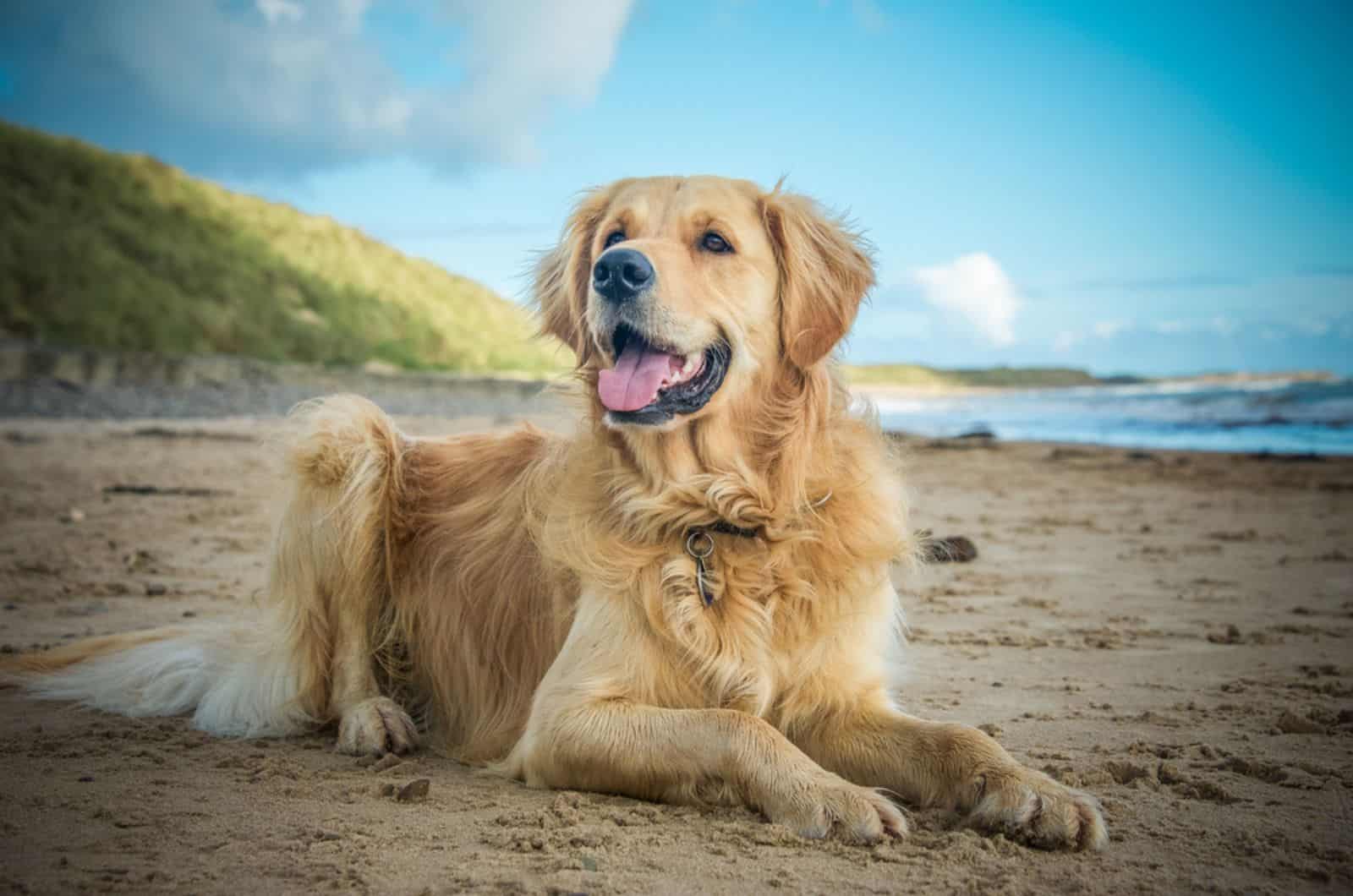
Golden Retriever hip dysplasia is a common hereditary health problem that affects these big boys. In fact, it is common in all large dog breeds such as German Shepherds, Alaskan Malamutes, and Bullmastiff dogs.
What happens during hip dysplasia is that the hip joints don’t develop properly, causing long term pain, trouble moving, and can result in canine arthritis.
12 Golden Retriever Hip Dysplasia Symptoms
Even though there is no cure for this condition, it is possible to manage it by providing proper care to your Goldie.
So, don’t worry! Once you figure out these signs of hip dysplasia, you will be able to assess your pooch on time!
1. Getting Up Is A Struggle
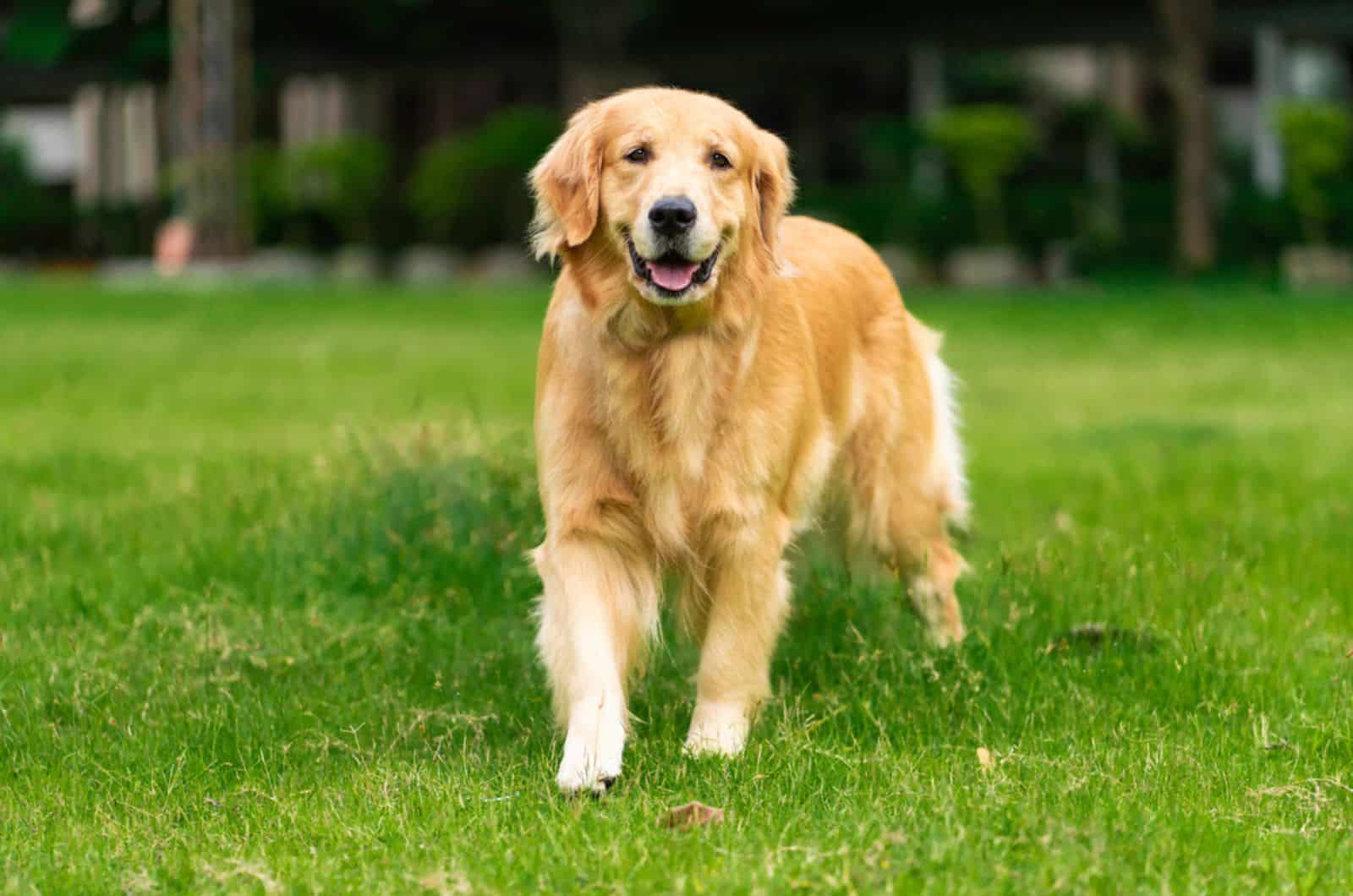
If your Goldie is struggling to rise from their cozy spot, it could be a doggy distress signal from his hip socket! It’s not because they’re feeling lazy, but rather because their ball and socket joint is misbehaving and causing some trouble.
And if you’re thinking “Golden Retriever hip dysplasia”, you’re on the right track, but it’s not just limited to these pooches – many big breeds may have similar symptoms related to joint pain.
2. Running Is A No-Go
The best way to describe it is if you imagine trying to ride a bike with a wobbly wheel or try running with shoes that are too large for you. Not the most fun experience, right?
No matter the type of Golden Retriever you have, all of those who are affected by hip dysplasia will have a hard time running around.
Their painful hip joint does not allow them to run freely wherever they want, which can be quite bothersome due to the fact that these pups are among the most energetic dogs out there!
When they start slowing down, you know that something is just not right.
3. Stairs Are A Challenge
Stairs were never a problem for your Goldie, but now it seems they are.
Going up and down stairs can feel like a mountain climbing adventure for Golden Retrievers with hip dysplasia!
Each step can be a challenge, as their hips aren’t working together like they should.
They feel wobbly and unstable, and may even develop a fear of stairs. But, who can blame them, right?
4. Stiff As A Board
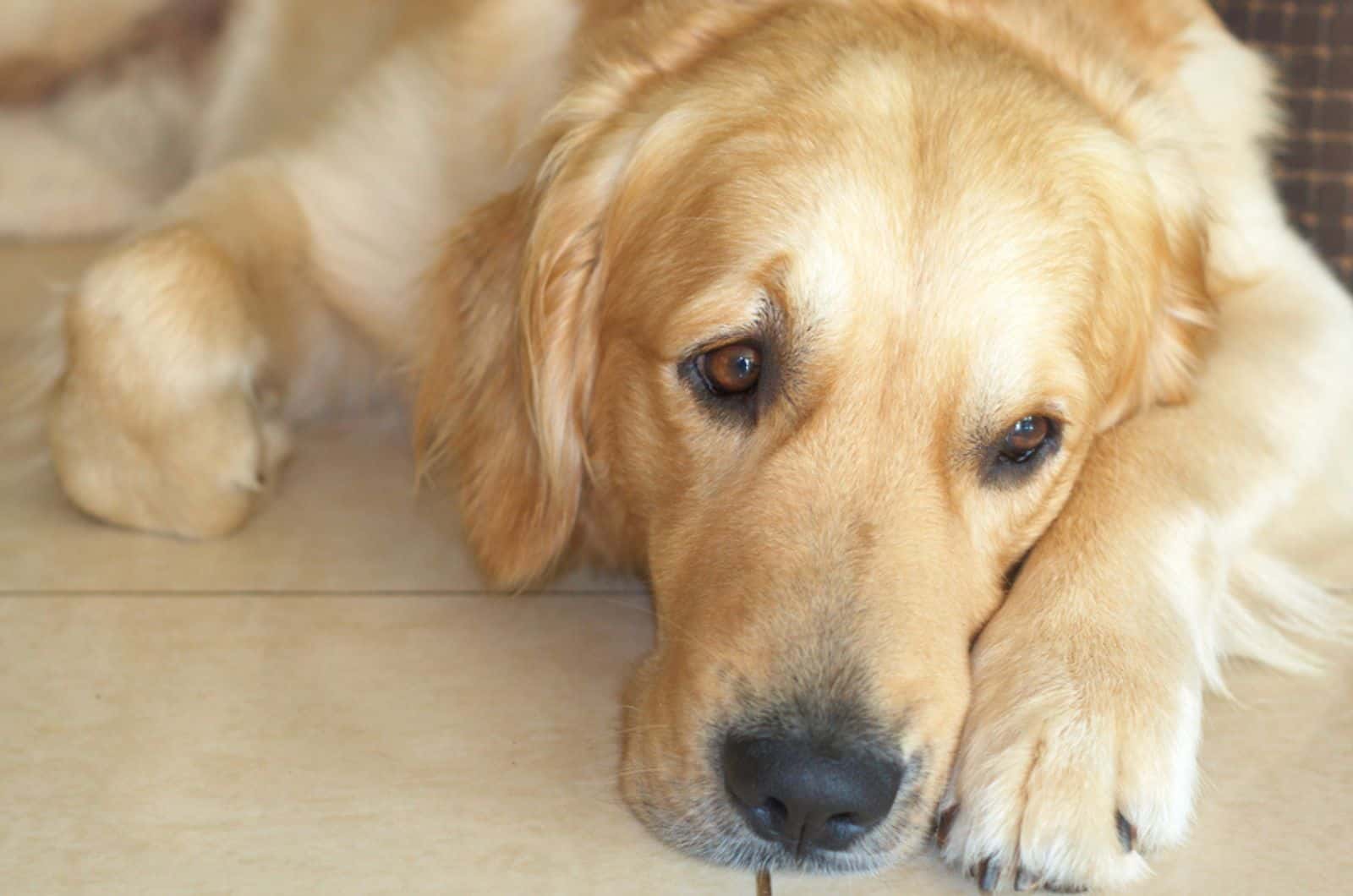
With pain and uncomfort, stiffness in your Golden Retriever’s hips can be a real bummer!
When your Golden pup can’t stretch their legs and wag their tail like they used to, it is an undoubtful sign that hip dysplasia is taking its toll.
This happens when the femur and acetabulum rub against each other, which is why your pup moves a little stiff as they are trying to avoid any extra aches and pains.
5. Bunny Hopping
There is nothing fun and cute about bunny hopping in Golden Retrievers with hip dysplasia.
This is a classic sign that you can spot with just a quick glance. Usually, all dogs move one hind leg and then the front leg on the same side, but when a dog starts hopping like a bunny, it’s a sure sign that something’s not quite right with their hips.
It’s like they’re trying to avoid putting pressure on a sore spot. Such hopping in dogs is commonly known as the bunny hop gait.
6. Movement Restrictions
It seems like your Golden Retriever buddy is having trouble getting those back legs stretched out!
You might notice his legs are wobbly and he is even trying to walk sideways. This is due to pain and discomfort he feels in his hind legs.
But if you keep an eye out for these changes in his movements, then you can act fast and consult your vet about next steps you should take.
7. Grating During Movement
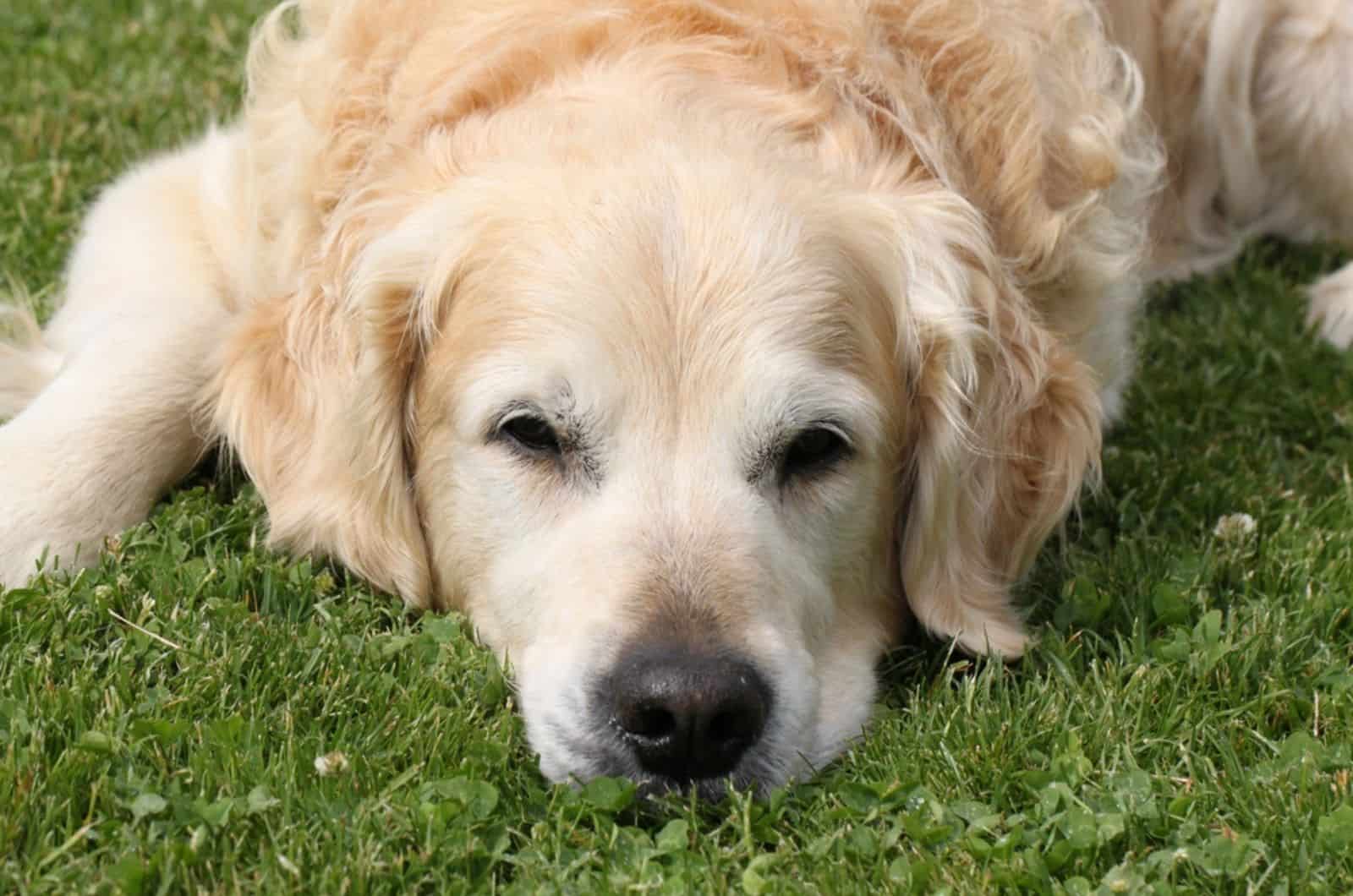
If you hear a grating or grinding noise when your Golden Retriever puppy moves, it might be a sign of hip dysplasia
Imagine two pieces of metal scraping against each other – that’s what’s happening with their hips.
Unfortunately, there’s no magic cure that can make the cartilage grow back, so hip dysplasia just keeps getting worse over time.
8. Hind Legs Limp & Lame
Limping and lameness are a nightmare to all dogs, especially bigger ones like Golden Retrievers. It indicates that they are not feeling their best.
While there are many other conditions that can cause limping, such as red paws, splinters, separated nail quicks, and muscle strains, it is usually hip dysplasia that is the main suspect.
So, if you see your pup limping around, you can try treating it at home, but it might be best to pay a visit to the vet to get them back to their bouncy, happy self!
9. Hip Muscle Melting Away
Loss of muscle mass appears as a result of prolonged hip dysplasia. It happens because your Golden Retriever’s legs are not being used properly. He’s limping and having trouble walking, which means he chooses to rest most of the time.
So, when they’re not getting enough use, the muscles can start to shrink and your Goldie might look like it’s got toothpicks for legs!
But the good news is, with the right exercise and physical therapy, those muscles can bulk up again.
10. Stronger Shoulders
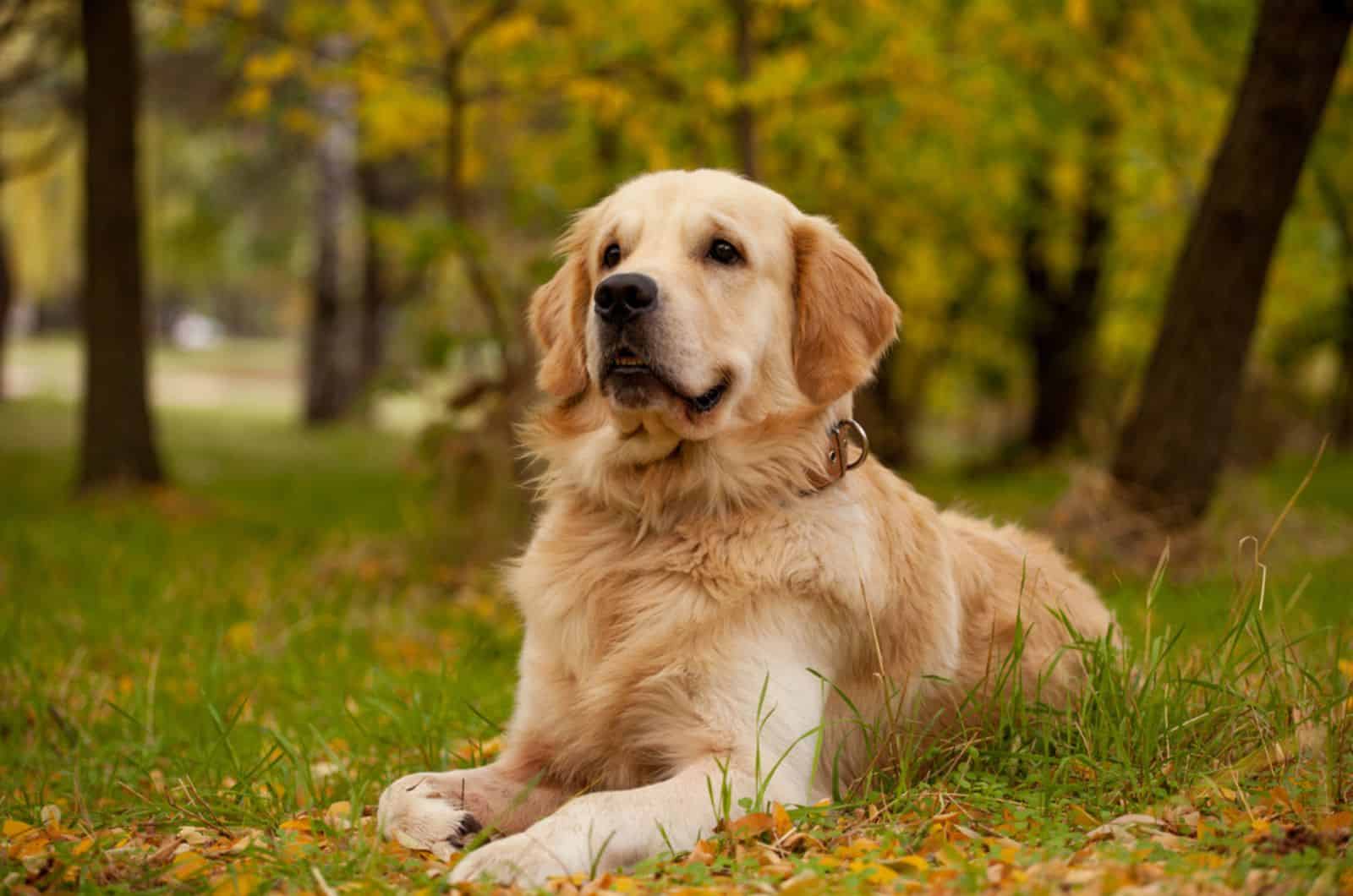
With weak and lame hind legs, Golden Retriever dogs start using their front legs and shoulders a little more to get around. So, their body compensates weak hind legs by using the stronger front legs and shoulders.
To make sure everything stays in place and everything stays strong, those front legs and shoulder muscles need to be extra beefy, as your pup relies on them more and more.
11. Pain Won’t Go Away
When hip bones rub together without a soft cushion in between, it becomes super painful!
And what does the Golden Retriever’s body do? It reacts to the pain as it tries to protect itself by making the hip joint stiff.
This is what we call osteoarthritis and degenerative joint disease. It is quite painful, but with regular physical care it becomes manageable.
12. Lazy Days Ahead
If you notice that your Golden Retriever buddy is showing less willingness to play, go for walks, or just be his usual goofy self, then it is probably because he is feeling weak and lethargic.
This can be a symptom of many other diseases, but hip dysplasia is often the one to blame.
So, for Goldies, less activity does not necessarily mean a sign of hip dysplasia, but it is worth noting that it can be among the first symptoms.
Is There A Cure For Golden Retriever Hip Dysplasia?
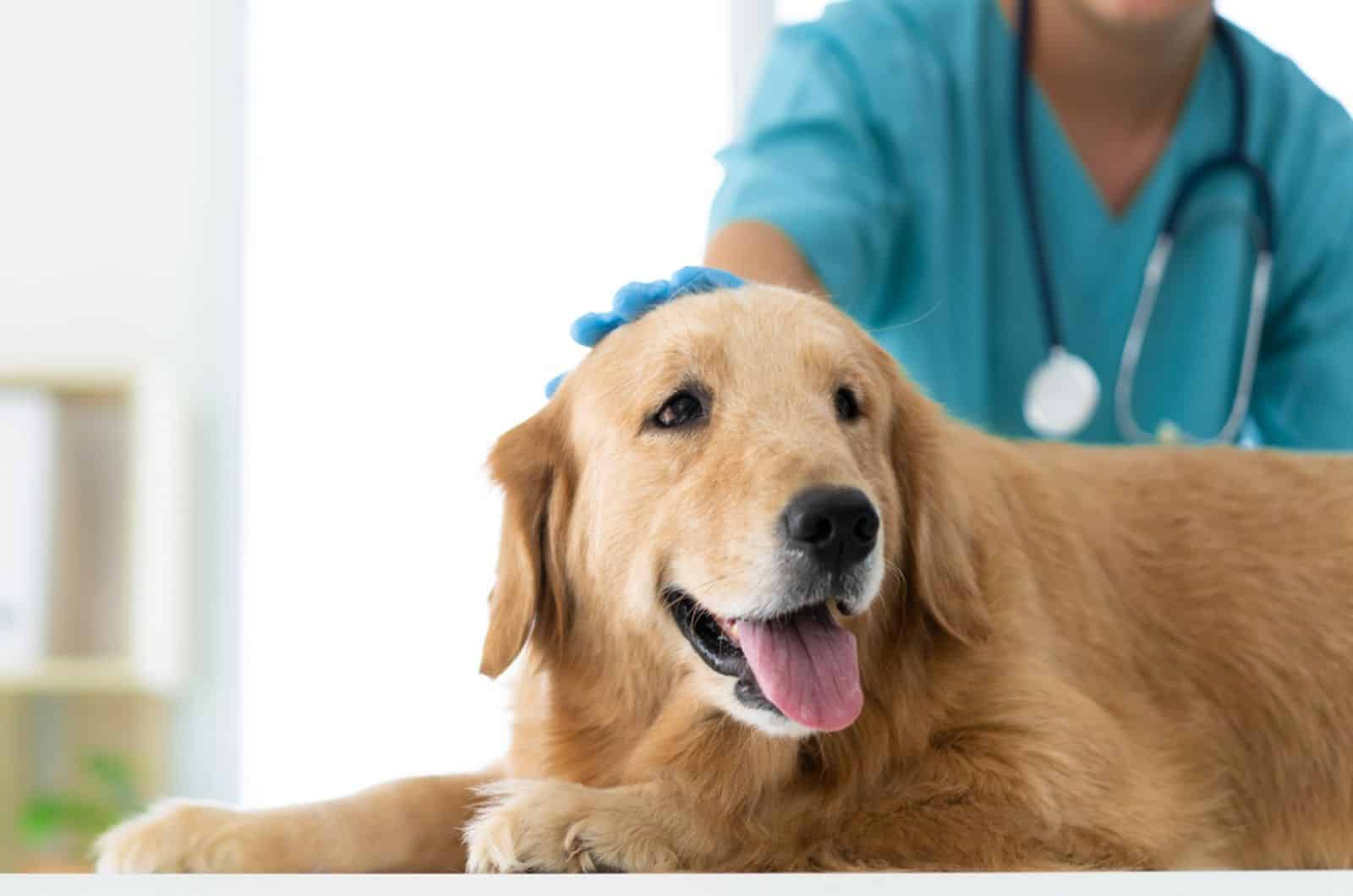
While there’s no magic wand to completely zap away hip dysplasia in Golden Retrievers, there are plenty of ways to manage it and keep your pup feeling their best.
The first step is to take your Goldie to a licensed veterinarian. At the clinic, they will most likely do a full check-up, including x-rays, OFA tests, and a look for other clinical signs. They will also ask you about when you’ve noticed it all started.
Based on the results, your vet will suggest a treatment plan that’s just right for your lovely Goldie. If the pain isn’t too bad, they might suggest some joint supplements, weight loss, or some pills to help with the discomfort.
But if the pain is really bad and affecting your dog’s happiness, surgery might be the best option.
The vet might suggest procedures like Triple Pelvic Osteotomy (TPO), Femoral Head Osteotomy (FHO), or in some cases, a full hip replacement. Mind you, this could cost quite a bit, but nothing is expensive when it comes to making your puppy feel better.
And as a final option, they might even suggest a bit of good ol’ acupuncture to relieve your pup from pain.
Final Thoughts
When it comes to Golden Retriever hip dysplasia, it is extremely important to keep an eye on his behavior and to contact your vet as soon as you notice the first symptoms.
A licensed DVM is able to recommend the best course of treatment based on the severity of your Golden puppy’s condition.
Whether it’s medication, surgery, or alternative treatments, the main goal is to improve your pup’s quality of life and keep them feeling their best.
So, don’t hesitate to seek help if you suspect your lovely canine is dealing with hip dysplasia! Remember, the sooner you notice, the higher the chances are for a successful recovery!













